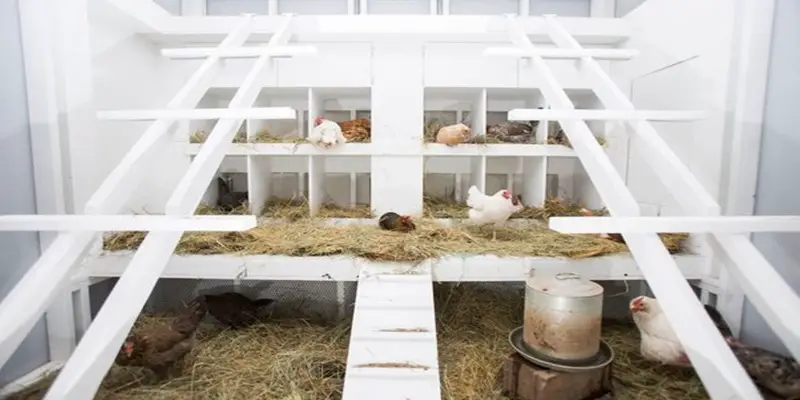Last Updated on May 7, 2024 by Pauline G. Carter
Designing a chicken coop involves more than just creating a shelter for chickens; it requires careful consideration of various features that ensure the health, safety, and productivity of the poultry. Below are the essential features that should be included in a chicken coop to provide a conducive environment for chickens.
Size and Space
The size of the chicken coop is crucial as it affects the comfort and well-being of the chickens. Each chicken should have enough space to move, sleep, and engage in natural behaviors. A general rule is to provide at least 4 square feet of space per chicken inside the coop if they have access to an outdoor run, and more if they are confined to the coop most of the time. Overcrowding can lead to stress, aggression, and increased disease transmission among the chickens.
Roosting Bars
Chickens naturally seek high spots to sleep to avoid predators. Roosting bars provide a natural and comfortable sleeping area. These should be positioned higher than the nesting boxes to prevent chickens from sleeping in the nesting areas, which can lead to contamination and damage to the eggs.
Nesting Boxes
Nesting boxes are essential for egg-laying. They should be dark, quiet, and comfortable to encourage hens to lay their eggs there. It is recommended to have at least one nesting box for every three to five hens. The boxes should be filled with soft bedding material like straw or wood shavings, which should be changed regularly to maintain hygiene.
Ventilation
Proper ventilation is critical to maintain air quality and comfort inside the coop. Ammonia and moisture can build up from the chickens’ droppings and breath, which can lead to respiratory problems and other health issues. Effective ventilation systems, such as vents, windows, doors, or exhaust fans, should be installed to ensure a steady flow of fresh air without causing drafts.
Insulation
Insulation is important to protect chickens from extreme temperatures. Proper insulation helps keep the coop warm in the winter and cool in the summer, providing a comfortable environment year-round. It also prevents moisture buildup, which can lead to mold and mildew.
Predator Protection
Chickens are vulnerable to various predators, including raccoons, foxes, and hawks. The coop should be constructed with sturdy materials and secure latches. All openings should be covered with hardware cloth instead of chicken wire, which is not strong enough to prevent predators from breaking in.
Easy Cleaning
To maintain a healthy environment, the coop must be easy to clean. Features such as removable trays or bedding, large doors for easy access, and materials that can be easily washed and disinfected contribute to easier cleaning and maintenance.
Durability
The materials used in the construction of the chicken coop should be durable to withstand weather elements and the wear and tear of daily use. Using weather-resistant wood, metal, or composite materials can ensure the longevity of the coop.
Conclusion
A well-designed chicken coop is essential for keeping chickens healthy, safe, and productive. By incorporating these essential features, chicken keepers can ensure their flocks have a suitable living environment that promotes their well-being and maximizes their egg-laying potential. Proper planning and consideration of these features will result in a functional and efficient chicken coop that meets the needs of both the chickens and their keepers.


